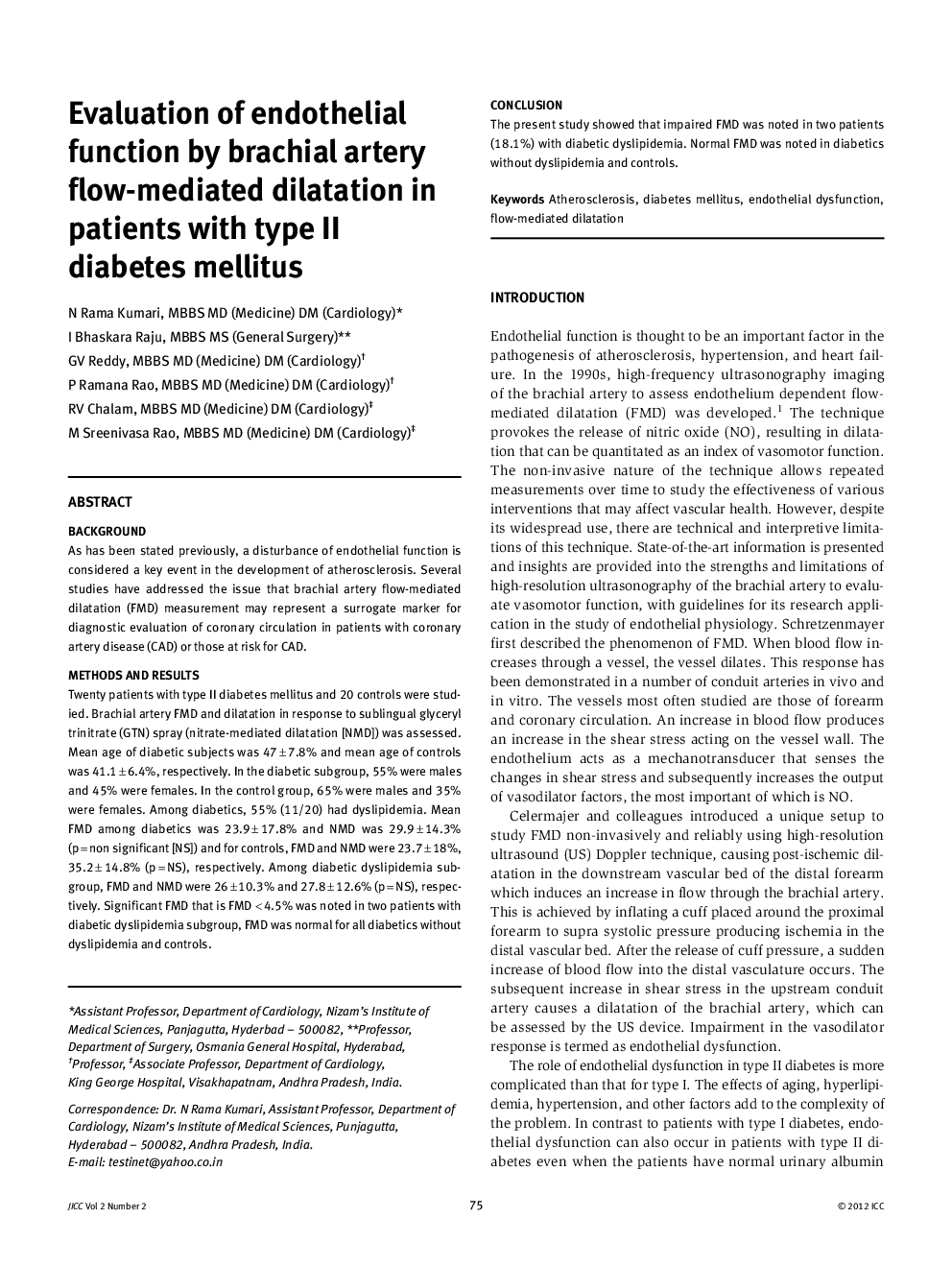| Article ID | Journal | Published Year | Pages | File Type |
|---|---|---|---|---|
| 2974043 | Journal of Indian College of Cardiology | 2012 | 4 Pages |
BackgroundAs has been stated previously, a disturbance of endothelial function is considered a key event in the development of atherosclerosis. Several studies have addressed the issue that brachial artery flow-mediated dilatation (FMD) measurement may represent a surrogate marker for diagnostic evaluation of coronary circulation in patients with coronary artery disease (CAD) or those at risk for CAD.Methods and ResultsTwenty patients with type II diabetes mellitus and 20 controls were studied. Brachial artery FMD and dilatation in response to sublingual glyceryl trinitrate (GTN) spray (nitrate-mediated dilatation [NMD]) was assessed. Mean age of diabetic subjects was 47±7.8% and mean age of controls was 41.1±6.4 %, respectively. In the diabetic subgroup, 55 % were males and 45% were females. In the control group, 65% were males and 35 were females. Among diabetics, 55% (11/20) had dyslipidemia. Mean FMD among diabetics was 23.9±17.8% and NMD was 29.9±14.3% (p=non significant [NS]) and for controls, FMD and NMD were 23.7±18 %, 35.2±14.8% (p=NS), respectively. Among diabetic dyslipidemia subgroup, FMD and NMD were 26+10.3% and 27.8+12.6% (p=NS), respectively. Significant FMD that is FMD <4.5 % was noted in two patients with diabetic dyslipidemia subgroup, FMD was normal for all diabetics without dyslipidemia and controls.ConclusionThe present study showed that impaired FMD was noted in two patients (18.1%) with diabetic dyslipidemia. Normal FMD was noted in diabetics without dyslipidemia and controls.
